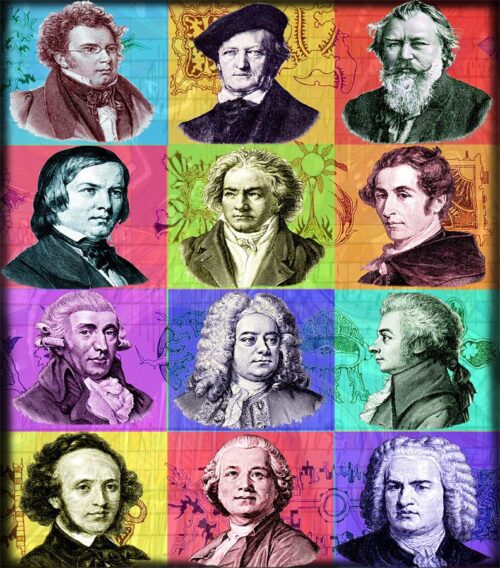Your cart is currently empty!
A History of Western Art Music

Preface
This history of Western art music is organized into chapters corresponding to each major period of its development, from the Middle Ages to the present day. Since the purpose of this book is to trace the evolution of the art form itself, the emphasis is placed primarily on the works of composers rather than the details of their lives. Each chapter is accompanied by a curated Spotify playlist. It is my hope that listening to these examples after reading about a particular composer will give readers a deeper understanding and appreciation of the music than reading about it or listening to it without context. In addition to the chapter-specific playlists, I have also created a playlist that spans the entire history of Western art music, from the medieval period to the modern day. This broader playlist can serve either as an introduction for newcomers or simply as a source of listening enjoyment for those already familiar with the tradition. I recommend using shuffle mode to experience a varied mix of pieces from different eras.
Note: Much of the text on this site is adapted from content on Wikipedia, used under the Creative Commons Attribution-ShareAlike License (CC BY-SA 4.0). Source articles can be accessed by clicking on the various headings and names of composers.
Western art music—often referred to as classical music—encompasses the cultivated musical traditions of the Western world, distinct from both its popular and folk counterparts. While the term “classical music” is sometimes used more broadly, in this context it refers specifically to a lineage of notated, structured musical practice that has developed over many centuries in Europe and, later, in other parts of the world influenced by European culture.
This tradition is typically associated with a high degree of formal complexity, particularly in its use of harmony, counterpoint, and large-scale structural forms. From its earliest roots in the medieval period, Western art music has been primarily a written tradition, relying on a sophisticated notational system that allowed composers to transmit increasingly intricate ideas across time and geography. This written legacy has given rise not only to a vast and diverse body of repertoire, but also to an extensive body of scholarship in theory, criticism, history, and philosophy.
More than a mere collection of works, Western art music is a reflection of the cultural, intellectual, and spiritual currents that have shaped Western civilization. Its evolution is deeply tied to the lives and ideas of individual composers, whose innovations and ideals have guided its development across eras. From the sacred chant of the early Middle Ages to the expressive innovations of the 20th century and beyond, this tradition continues to inspire, challenge, and enrich the way we understand music—and ourselves.
